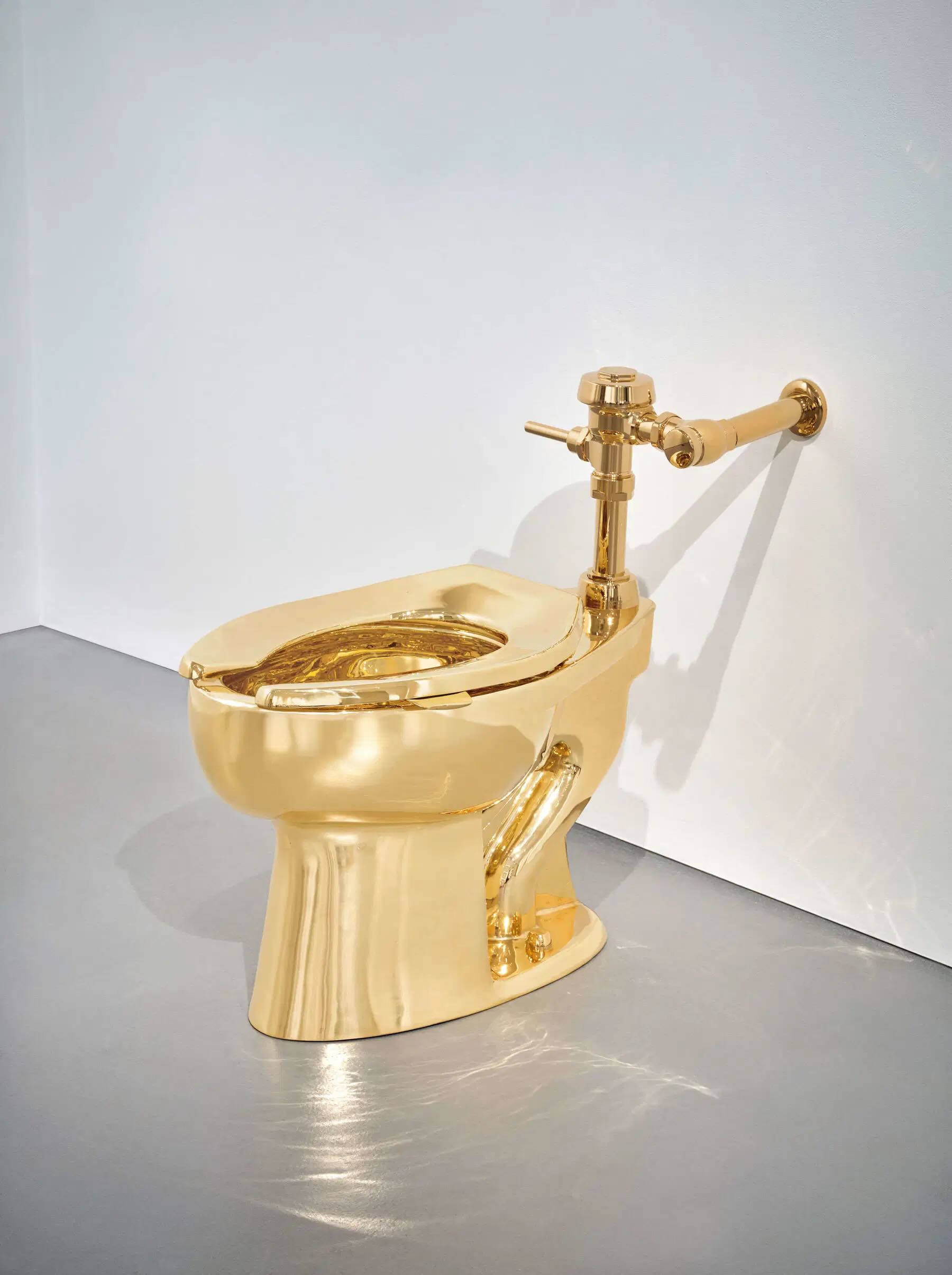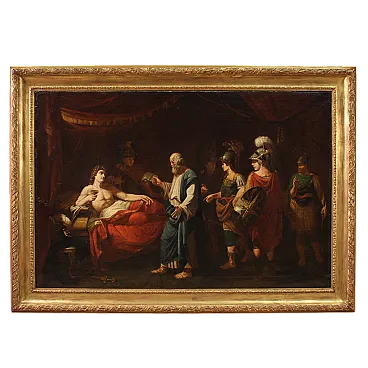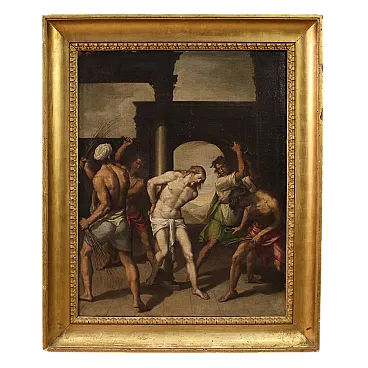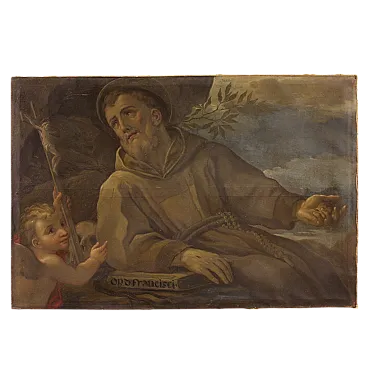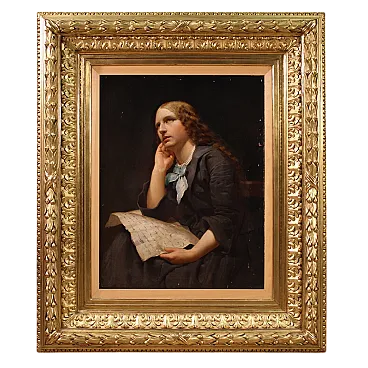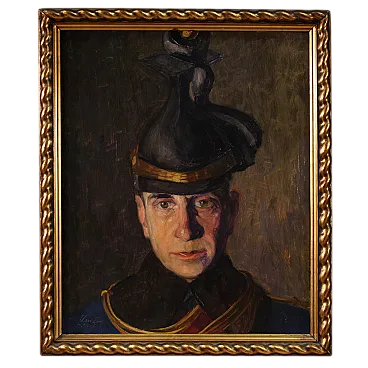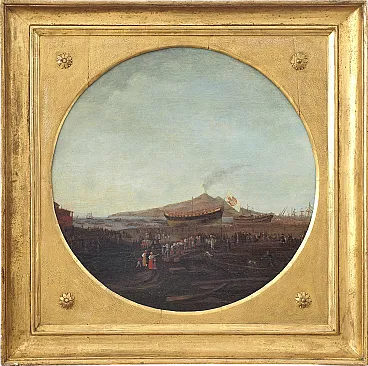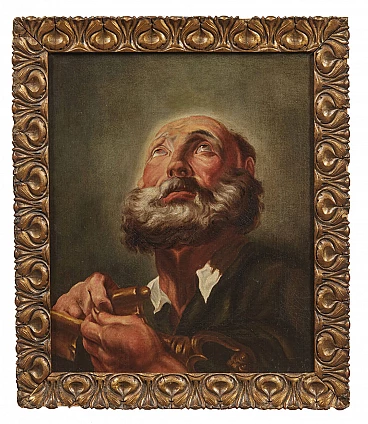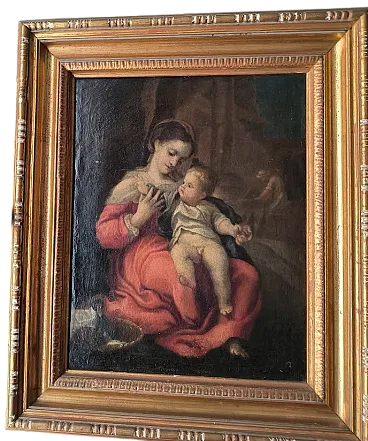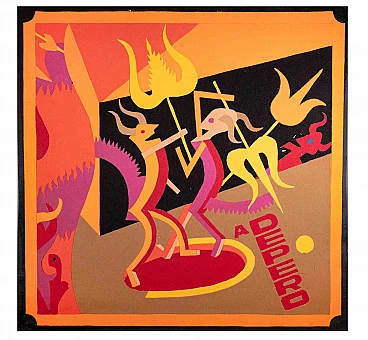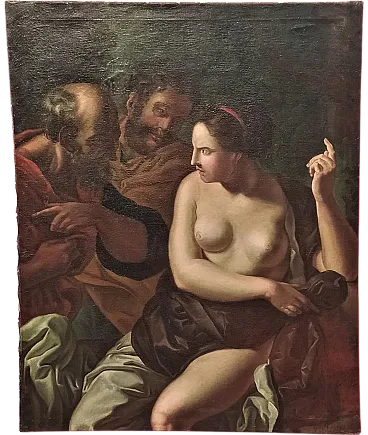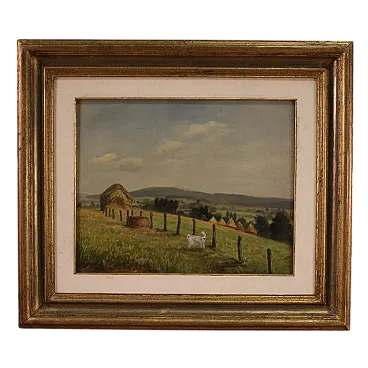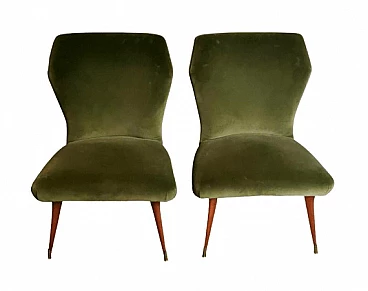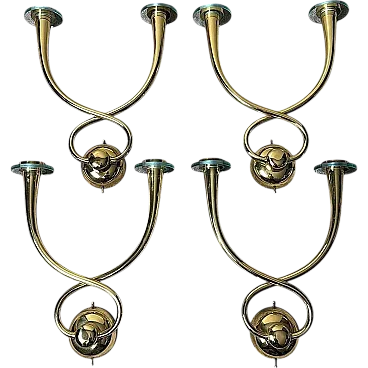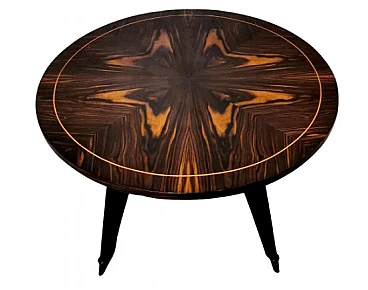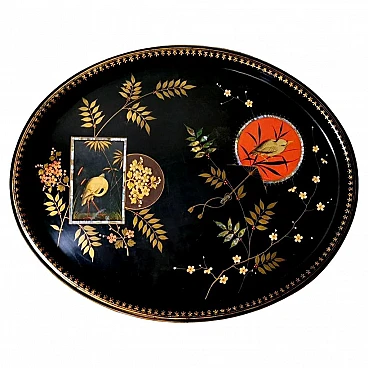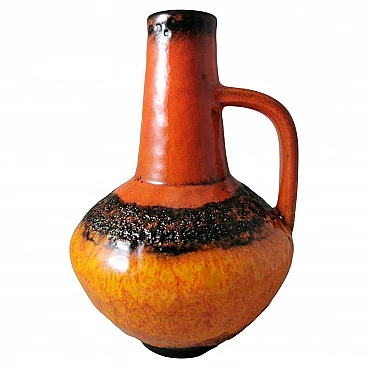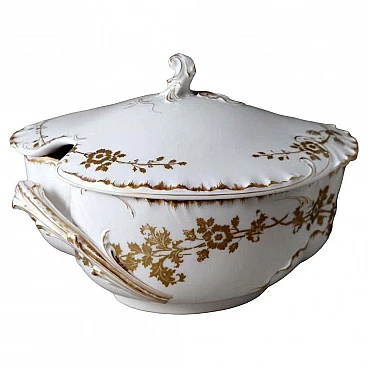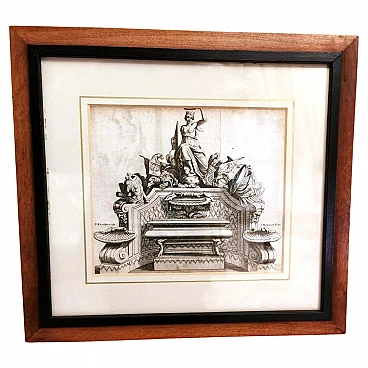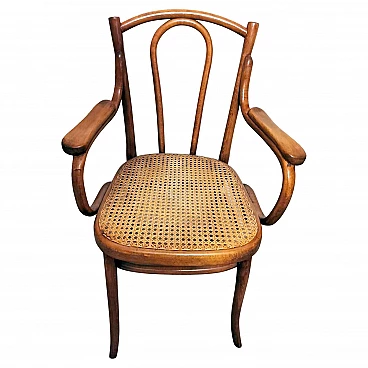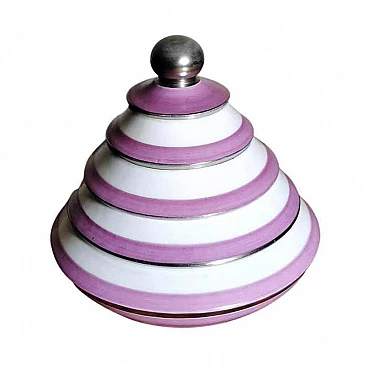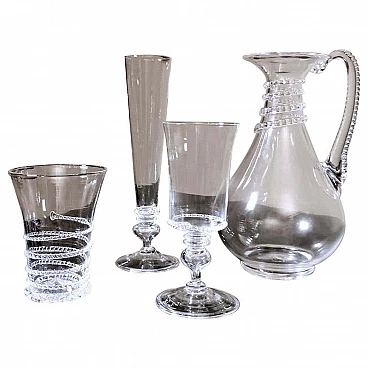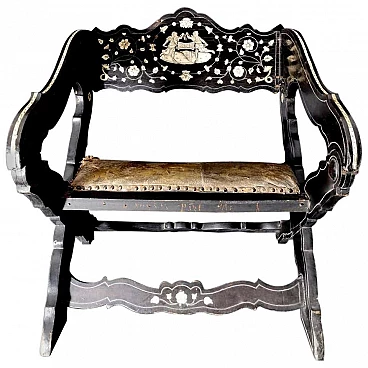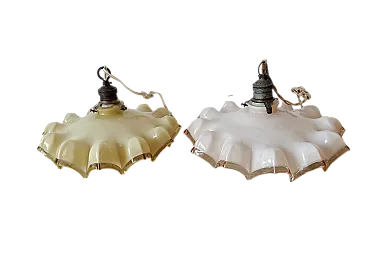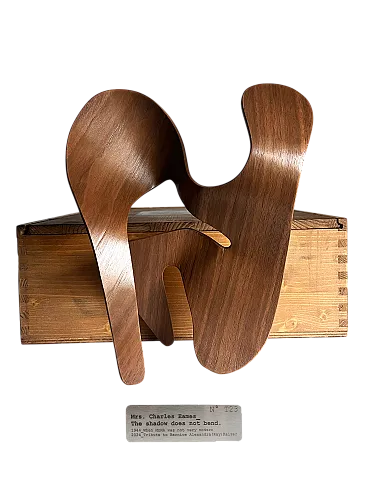The painting will be viewed at the Superintendency of Fine Arts in Florence, so as to be further enhanced by the Certificate of the prestigious Florentine. Exceptional and beautiful painting depicting the muse Calliope. It is a perfectly painted oil on canvas with a wealth of detail that complements, enriches and tells the story of the subject. The wooden frame is coeval, very simple, precisely to enhance the subject; it is black with light gilding and the back, also from the period, was designed and built to optimally support the work. The painting was executed between 1860 and 1870 in France during the reign of Napoleon III. It is not signed and therefore it is not possible to give any information about the author, however the extraordinary pictorial talent and surprising aestheticism of him can be confirmed. The anonymous painter belonged to the nineteenth-century current associated with an artistic style called "portrait on a golden background" or "portrait on a gold background"; this style was popular in 19th-century European art during the Rococo and Neoclassicism periods but particularly in the era of Napoleon III. The gold background (of Giotto's memory) was often used to give a sense of luxury and prestige to the portrait. Gold, due to its brightness and warm color, created a sumptuous atmosphere and helped to highlight the portrayed figure, who was usually placed in the center of the work, in the foreground, while the golden background occupied a large part or all the rest of the space. Gold ground portraits are still admired for their beauty and for the way they manage to capture the elegance and pomp of the era in which they were made. This style of portraiture was very popular with aristocrat and bourgeois figures of that historical period, who proudly exhibited this type of painting in their living rooms. The proposed work has all these characteristics, plus it's not just any portrait but depicts the muse Calliope. In 19th century painting, the Muses were often chosen as figures of inspiration and beauty. The Muses were deities of Greek mythology who inspired artists, poets and musicians; they were often portrayed as graceful young women with specific artistic talents. This Calliope is a woman aware of her superiority therefore mature, proud and haughty. In nineteenth-century paintings the Muses could be depicted individually or in groups. Artists of that period often sought to capture the beauty, elegance and inspiration associated with these divine figures, using a variety of painting styles and techniques to express their artistic vision. Our artist has best expressed all these peculiarities in the work he masterfully performed. Calliope, in Greek mythology, was the muse of epic and heroic poetry. In 19th century painting, the depiction of this muse was often associated with the representation of famous poets, writers or literates. The figure of her was used to symbolize poetic inspiration and literary creation. She was portrayed as a majestic figure and associated with the world of poetry and epics. Artists have sought to capture the essence of poetic inspiration and creativity through the depiction of this legendary deity. In the study of Greek myths, Calliope ("she who has a beautiful voice") was the muse of epic poetry, daughter of Zeus and Mnemosyne, known as the Muse of Homer, the inspirer of the Iliad and the Odyssey, and she is called by Lucretius "callida Musa, Calliope, requies hominum divomque voluptas" ("wise muse Calliope, consolation of men and voluptuousness of the gods"). She had two sons, Orpheus and Linus, whose father, depending on the legends, was either Apollo or the Thracian king Eagro. She was loved by her father Zeus and with him she gave birth to the Corybantes. She was the oldest and wisest of the Muses, as well as the most confident. She acted as judge in the Adonis dispute between Aphrodite and Persephone, deciding that each of her should spend equal amounts of time with him. Her symbols are the stylus and the wax tablet. She is always depicted holding the tablet to write on, sometimes she has a parchment or a book and wears a golden crown on her head. In our painting of her the depiction of her is even more singular: her stylus is in her right hand and the tablet in her left one, on her head she wears a laurel crown, while the golden one and the scepter are lay down at her feet. The laurel wreath is an ancient symbol of victory, glory and immortality, so the wreath surrounding Calliope's head in this painting indicates her dominant role in epic poetic inspiration and her supremacy in the field of literature. The scepter represents her sovereignty and her influence on the epic and poetic arts. Symbolically it states that Calliope is the source of inspiration for epic authors and heroic poets, guiding them and giving them the power of speech and creativity.

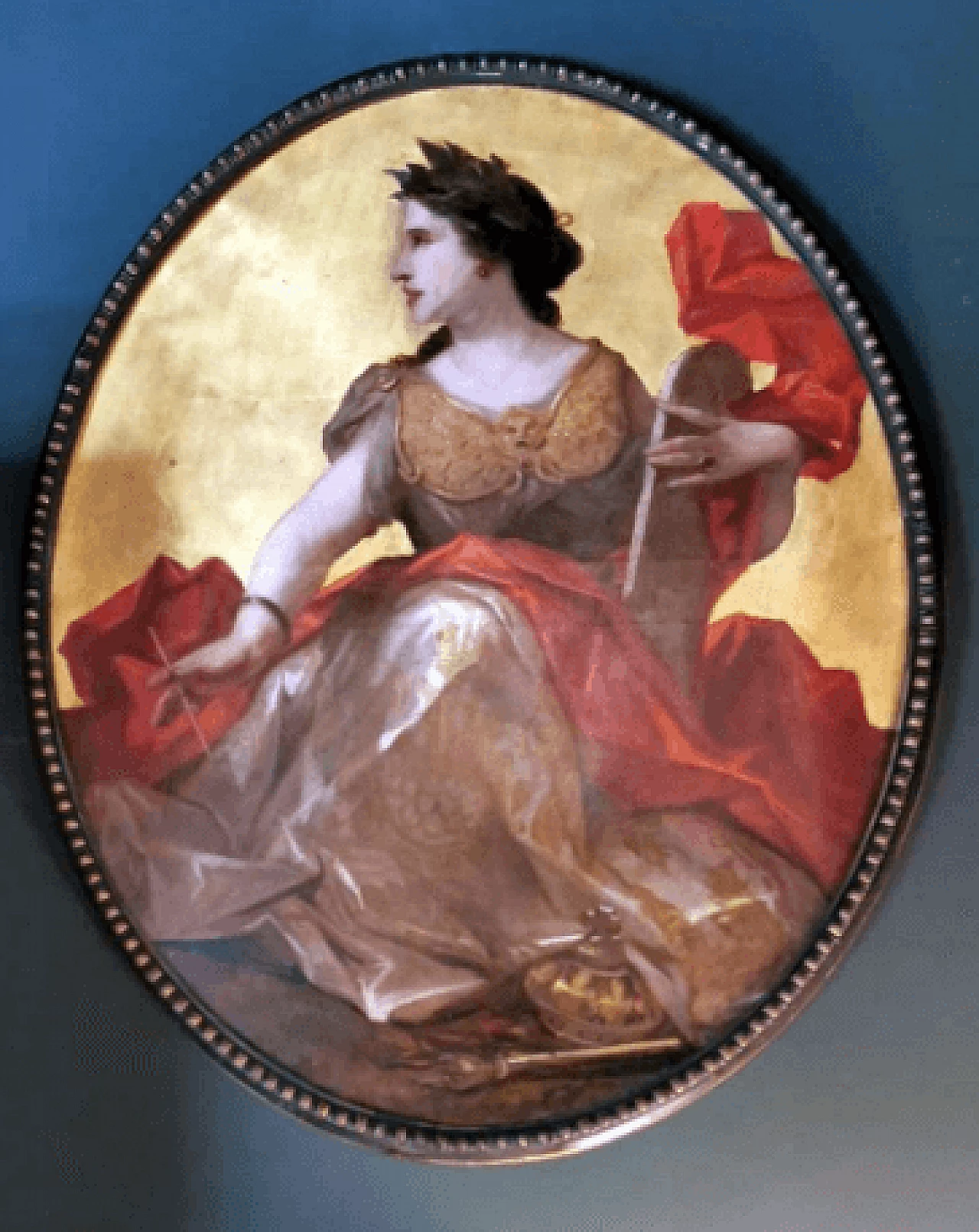
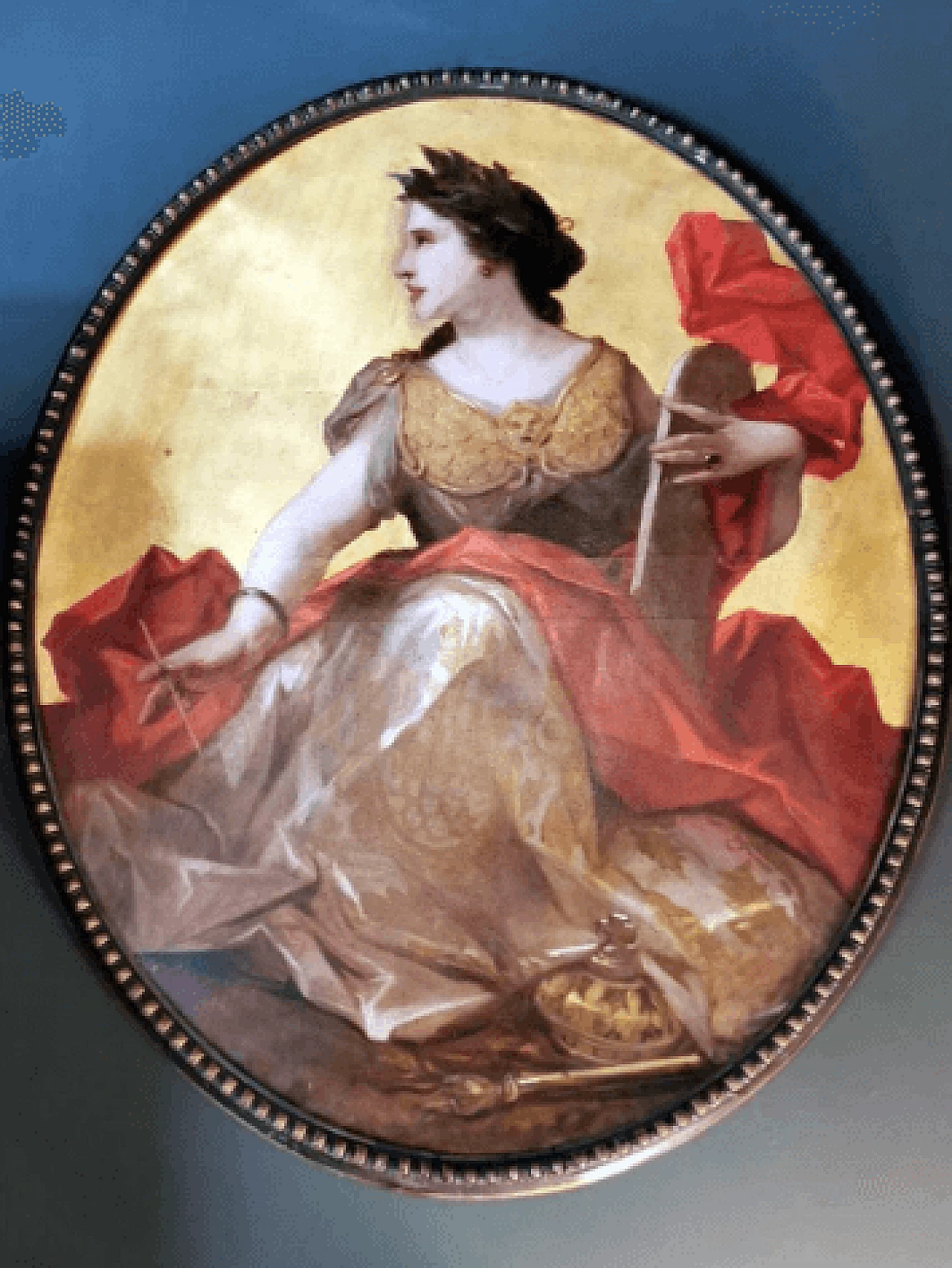
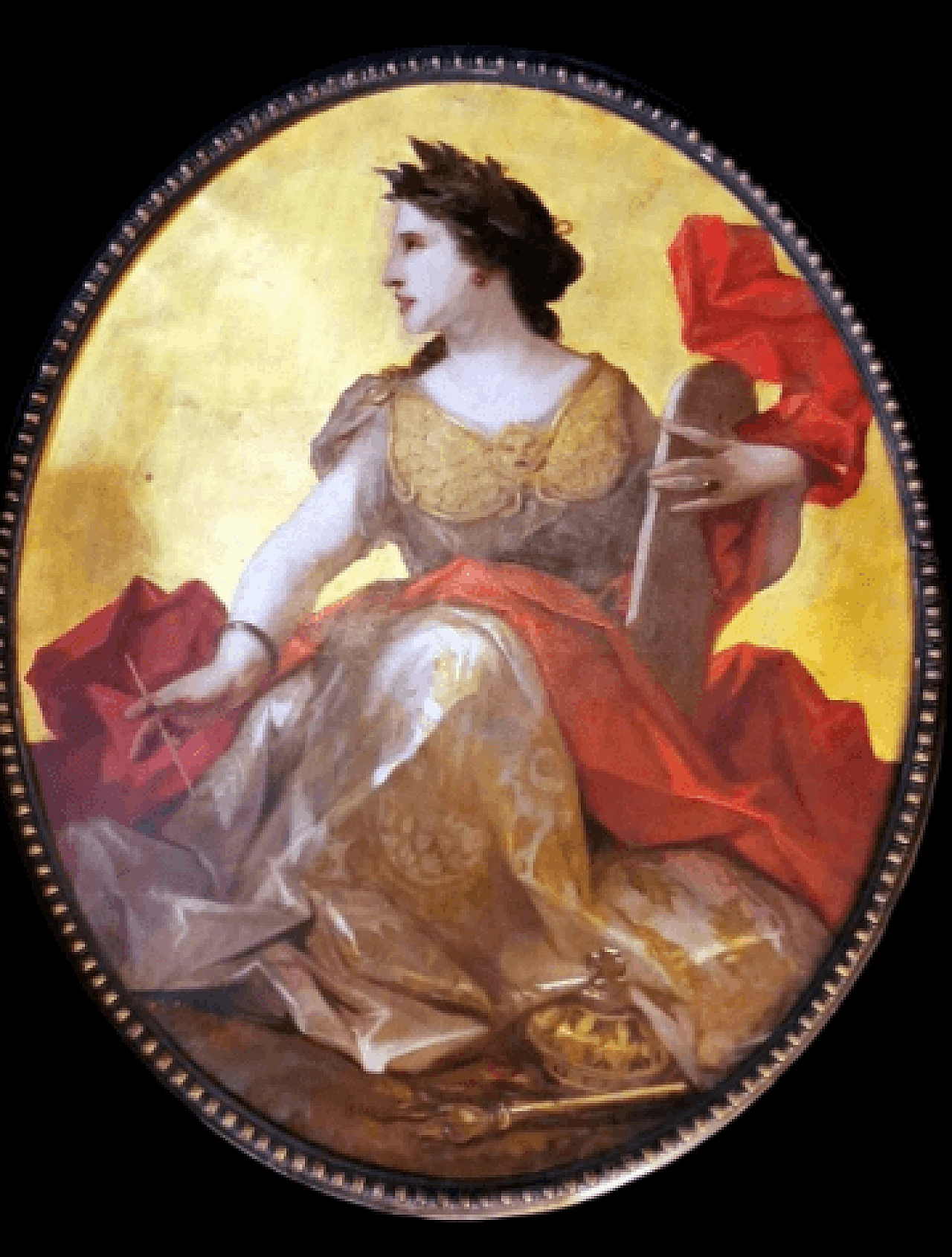
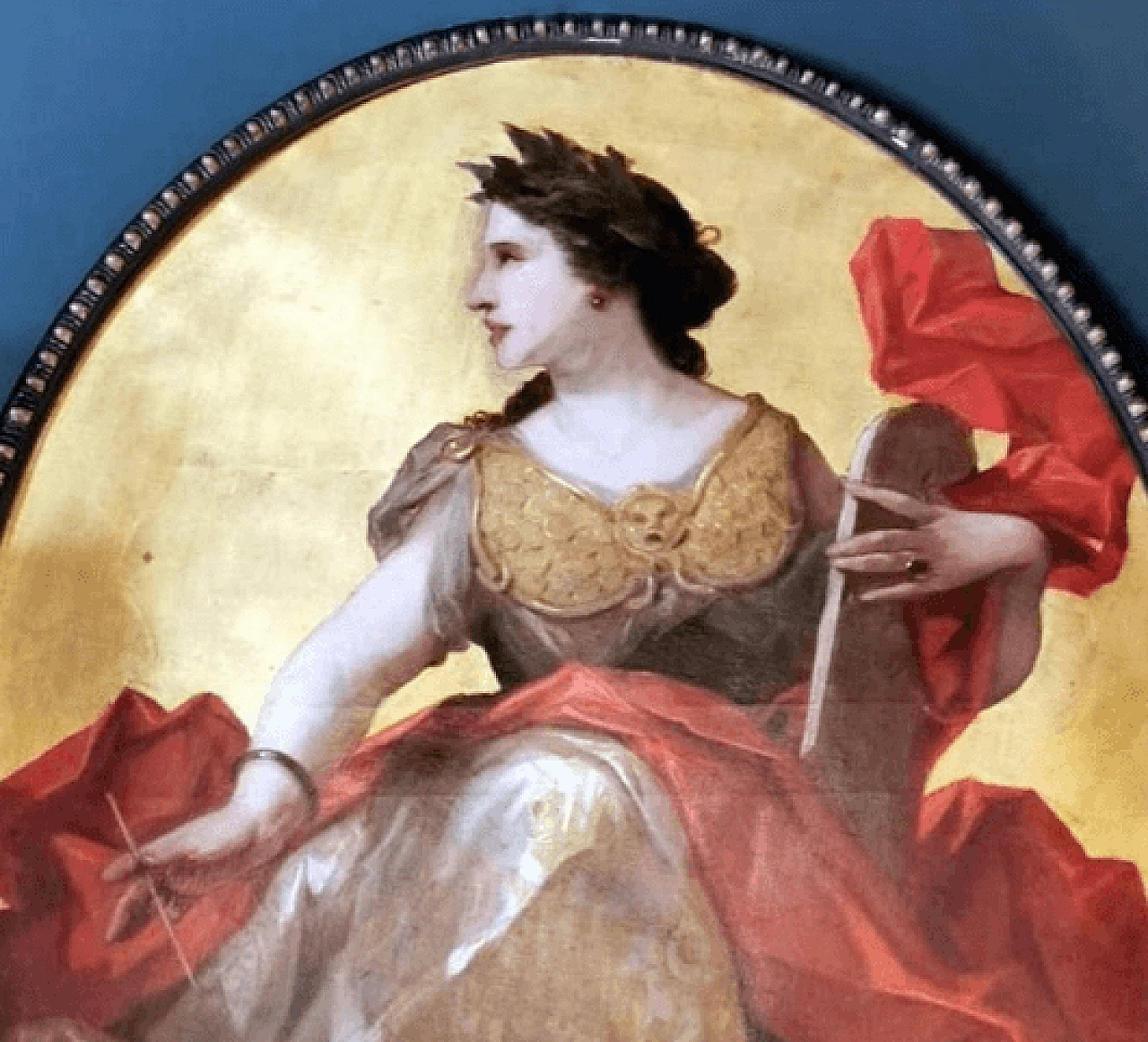
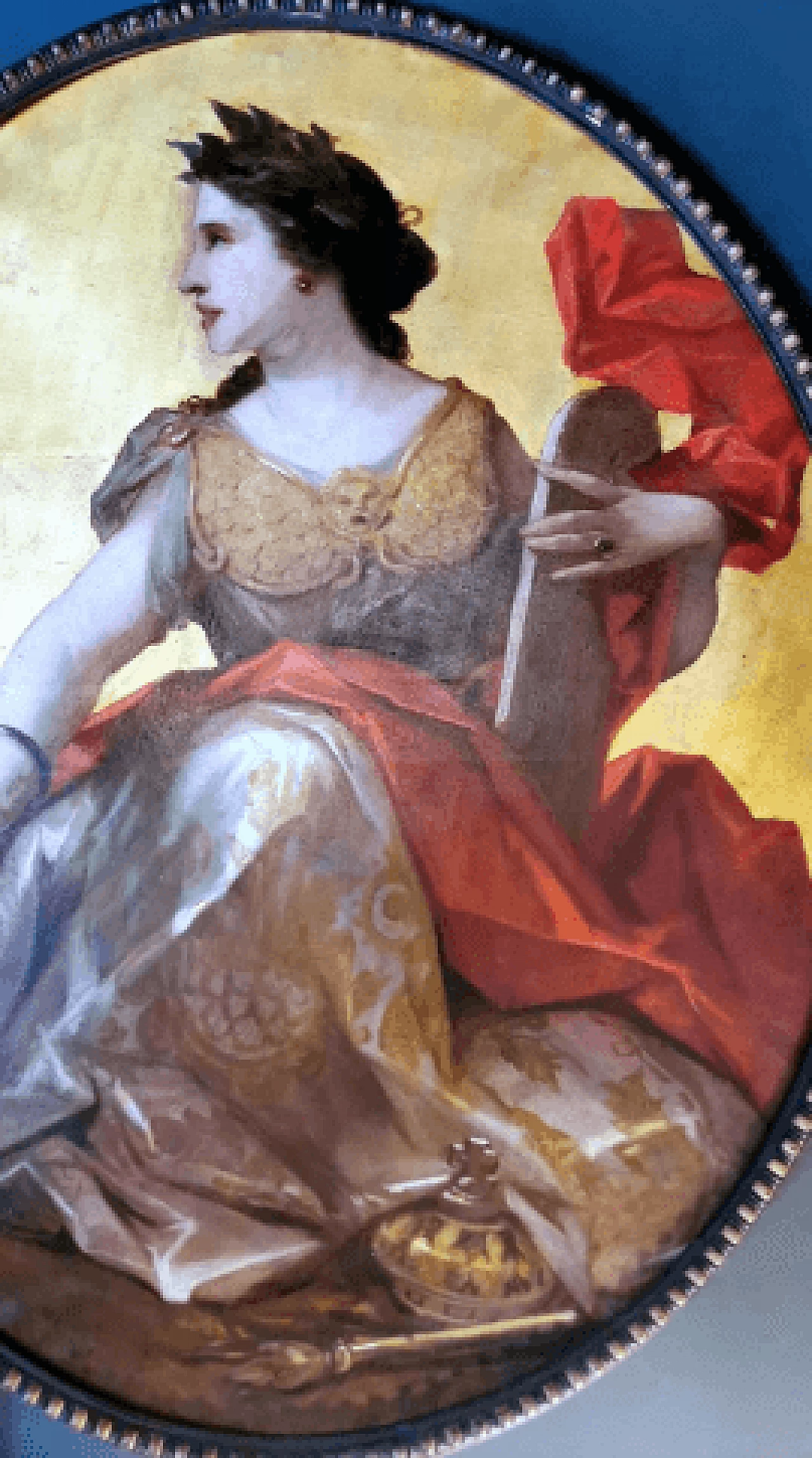
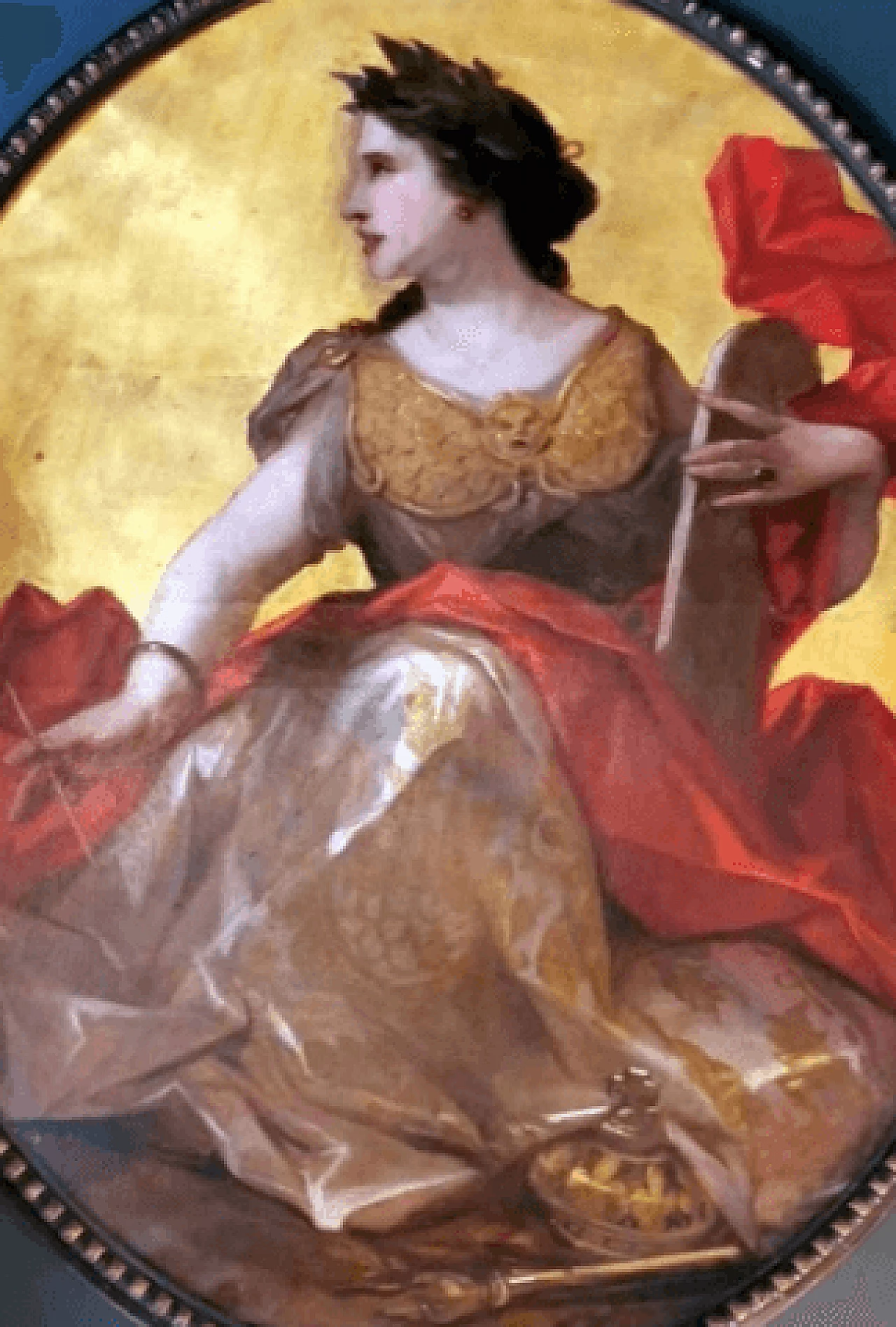
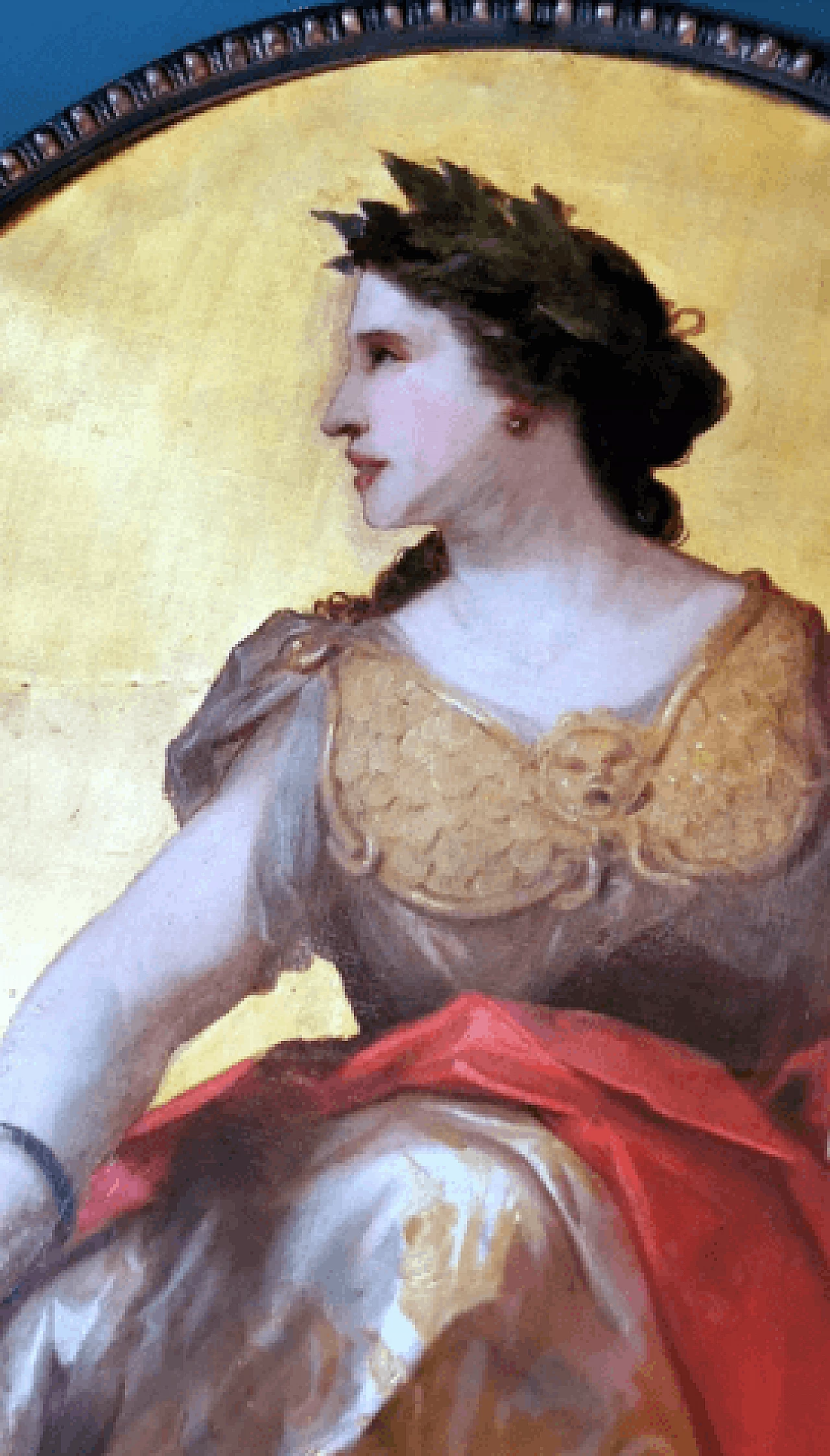
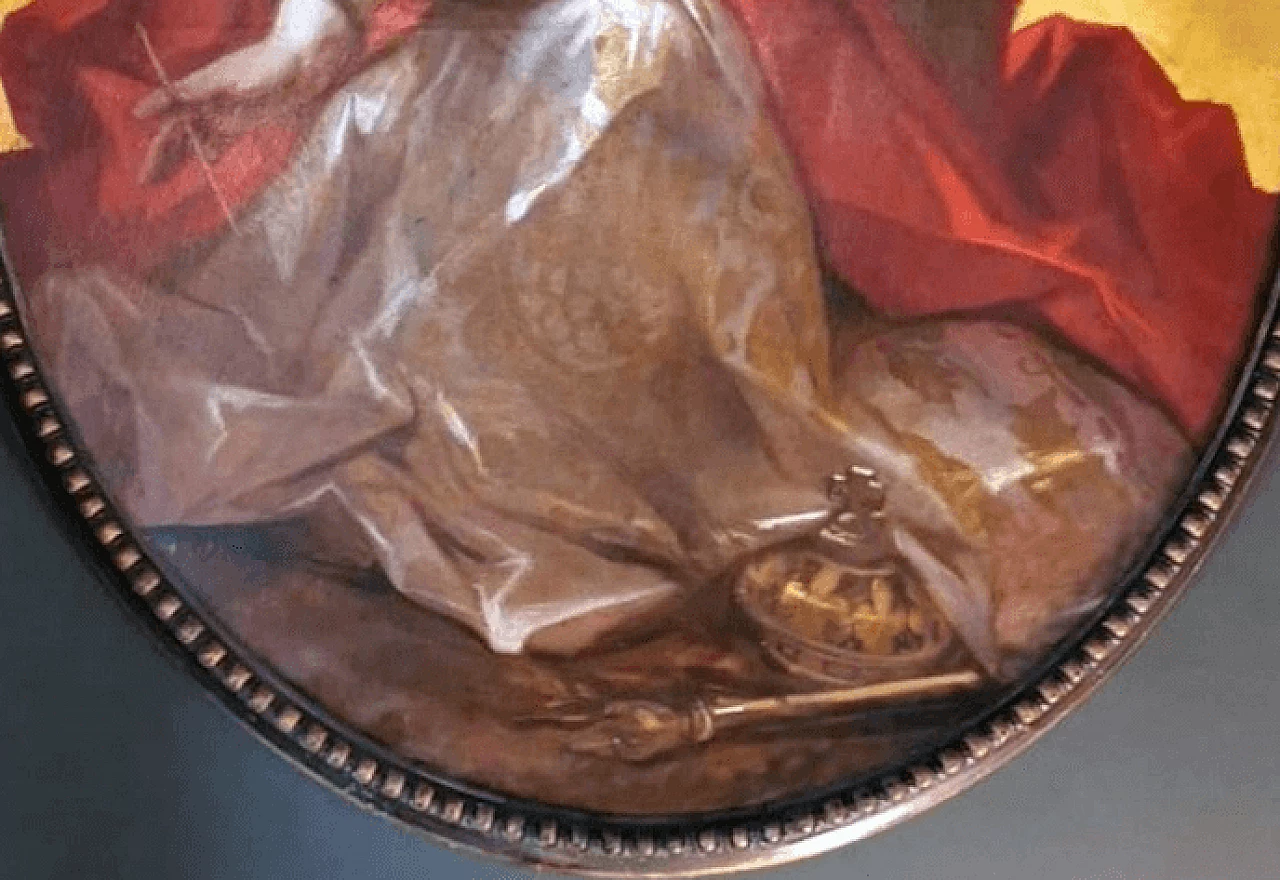
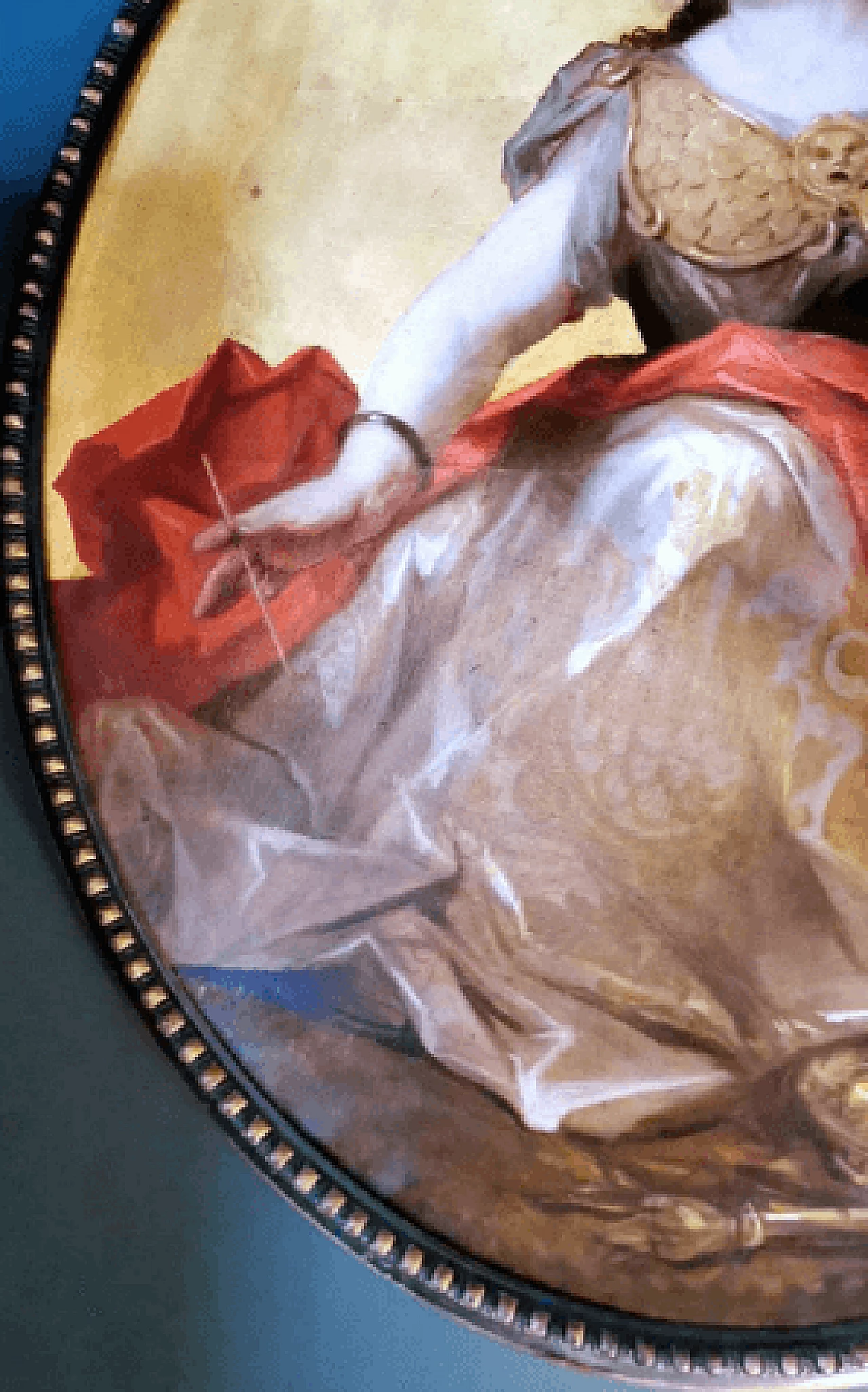
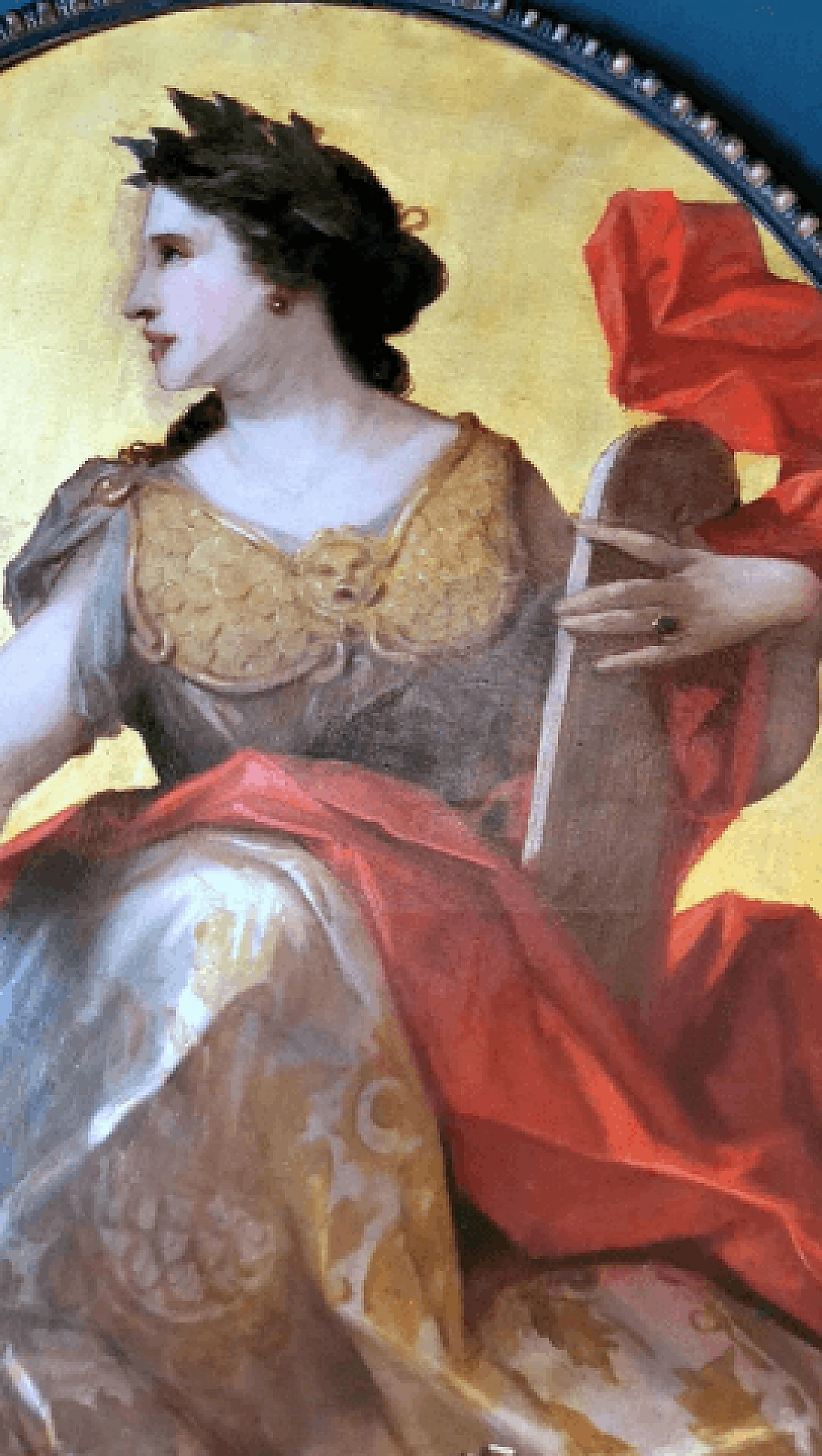
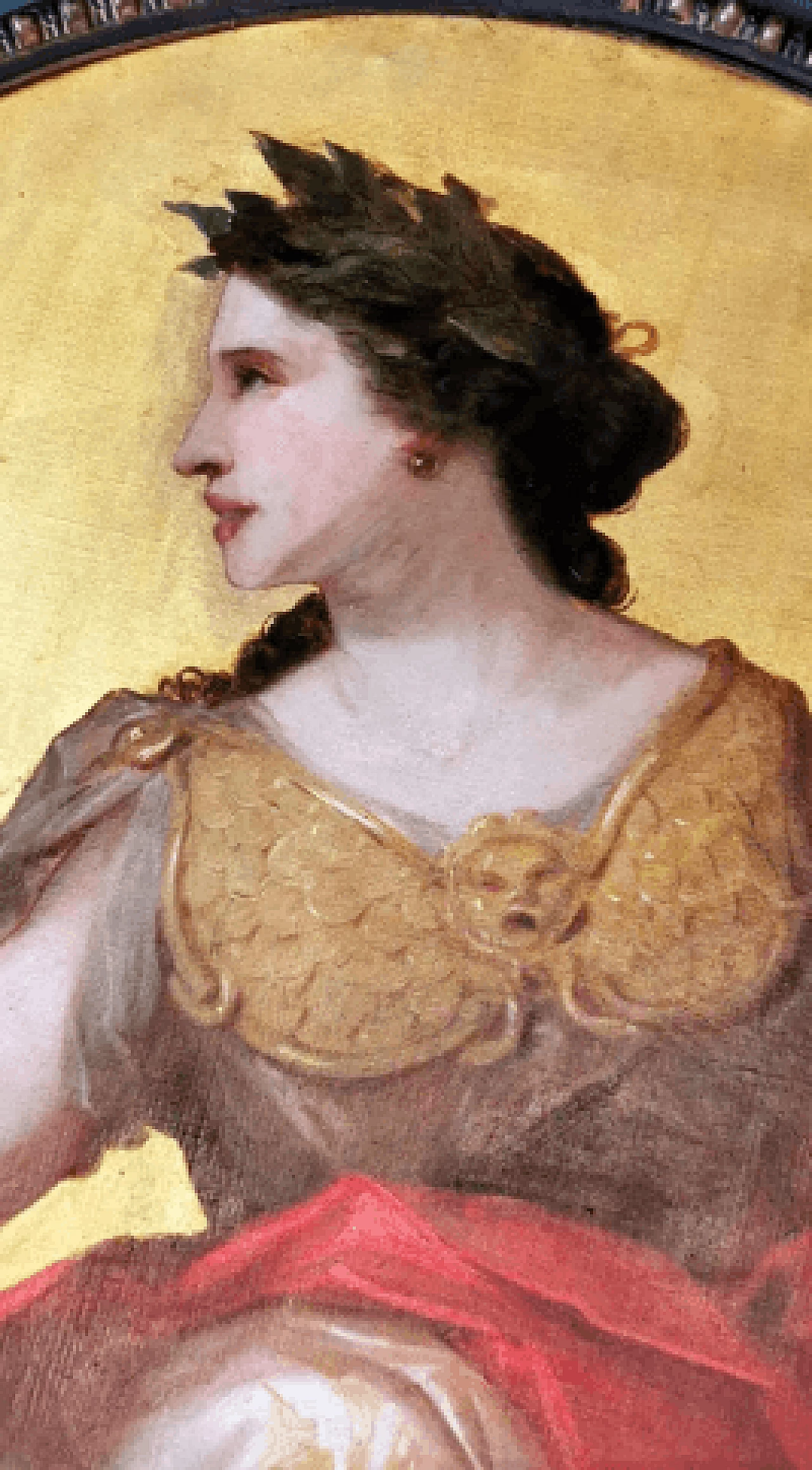
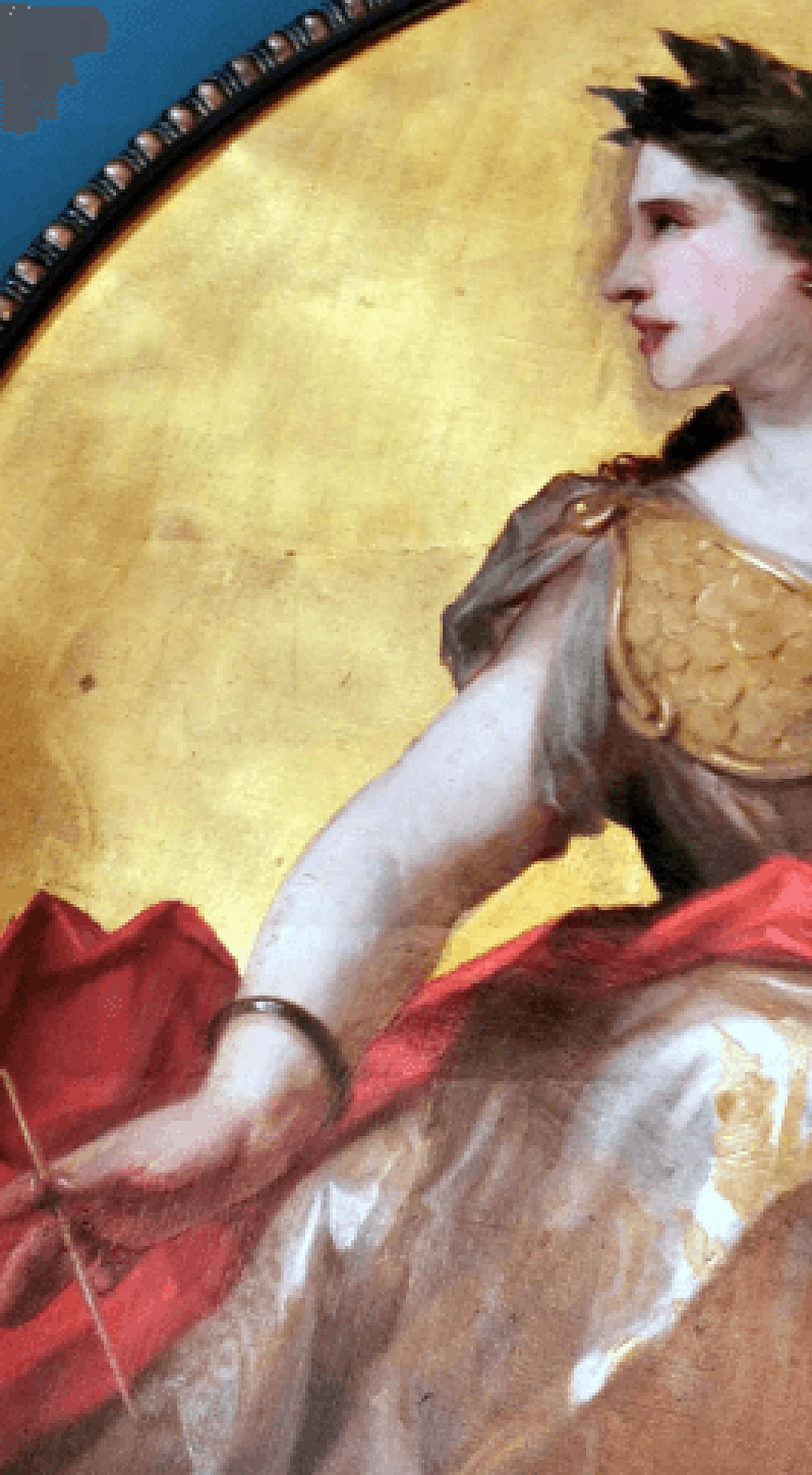
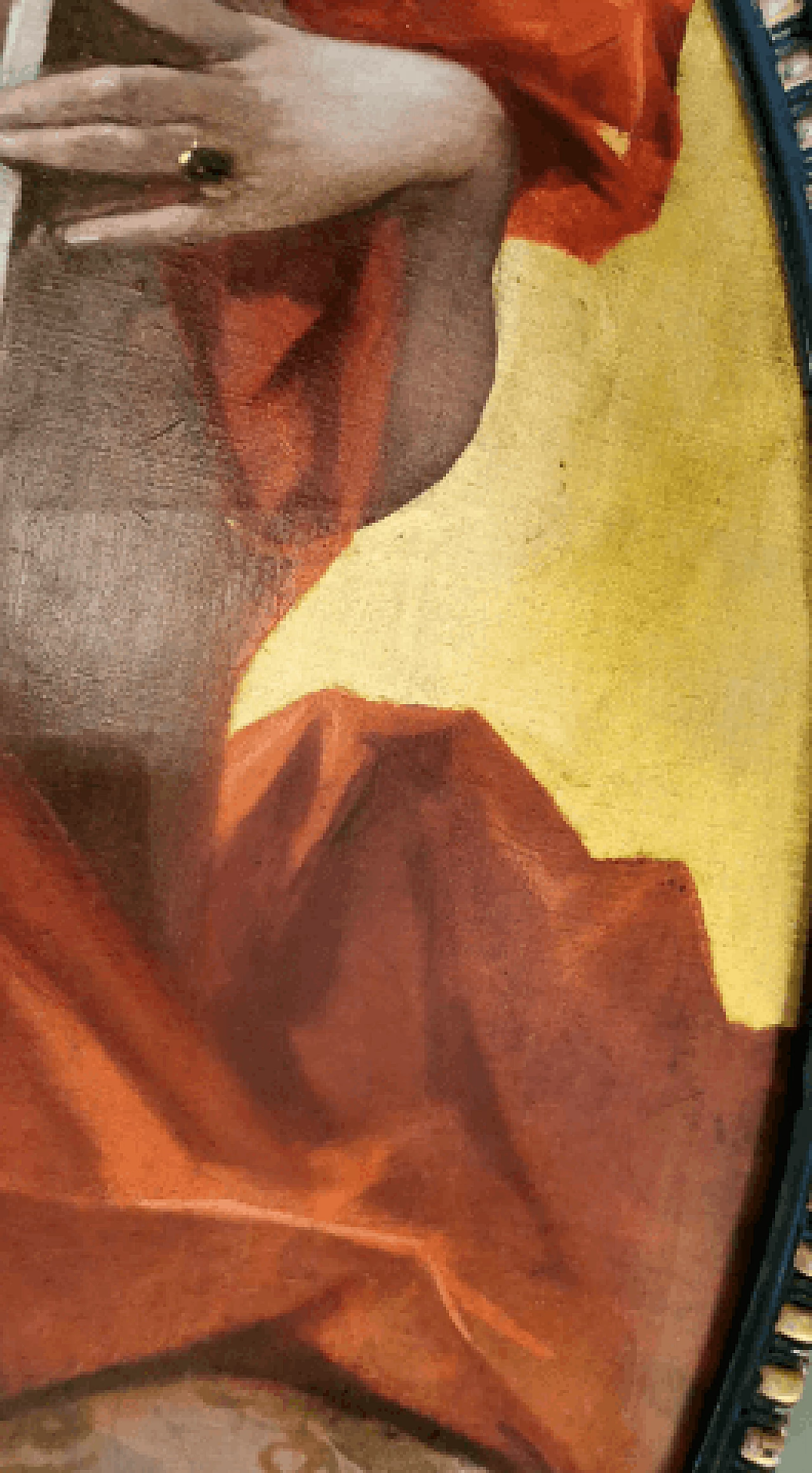
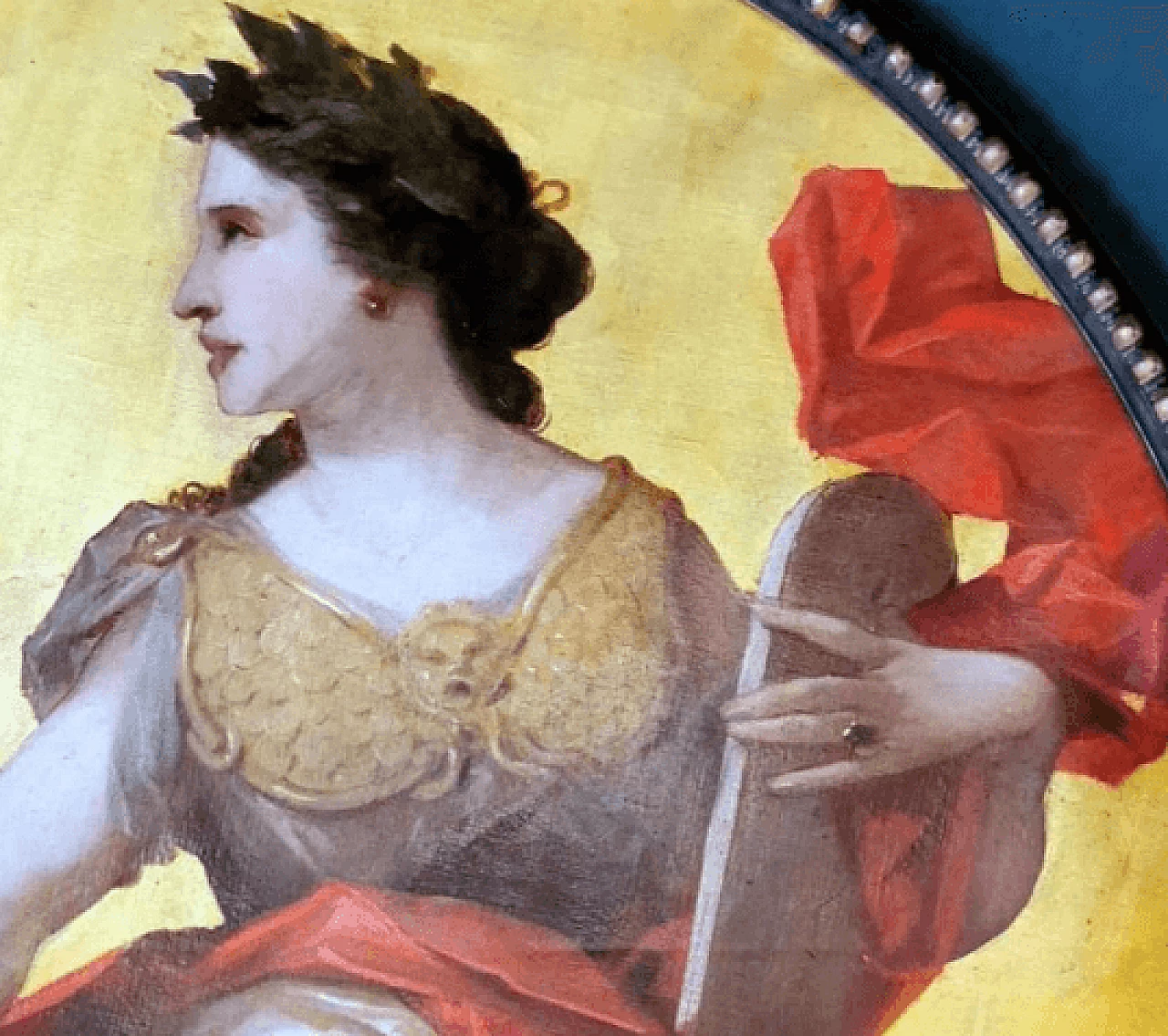
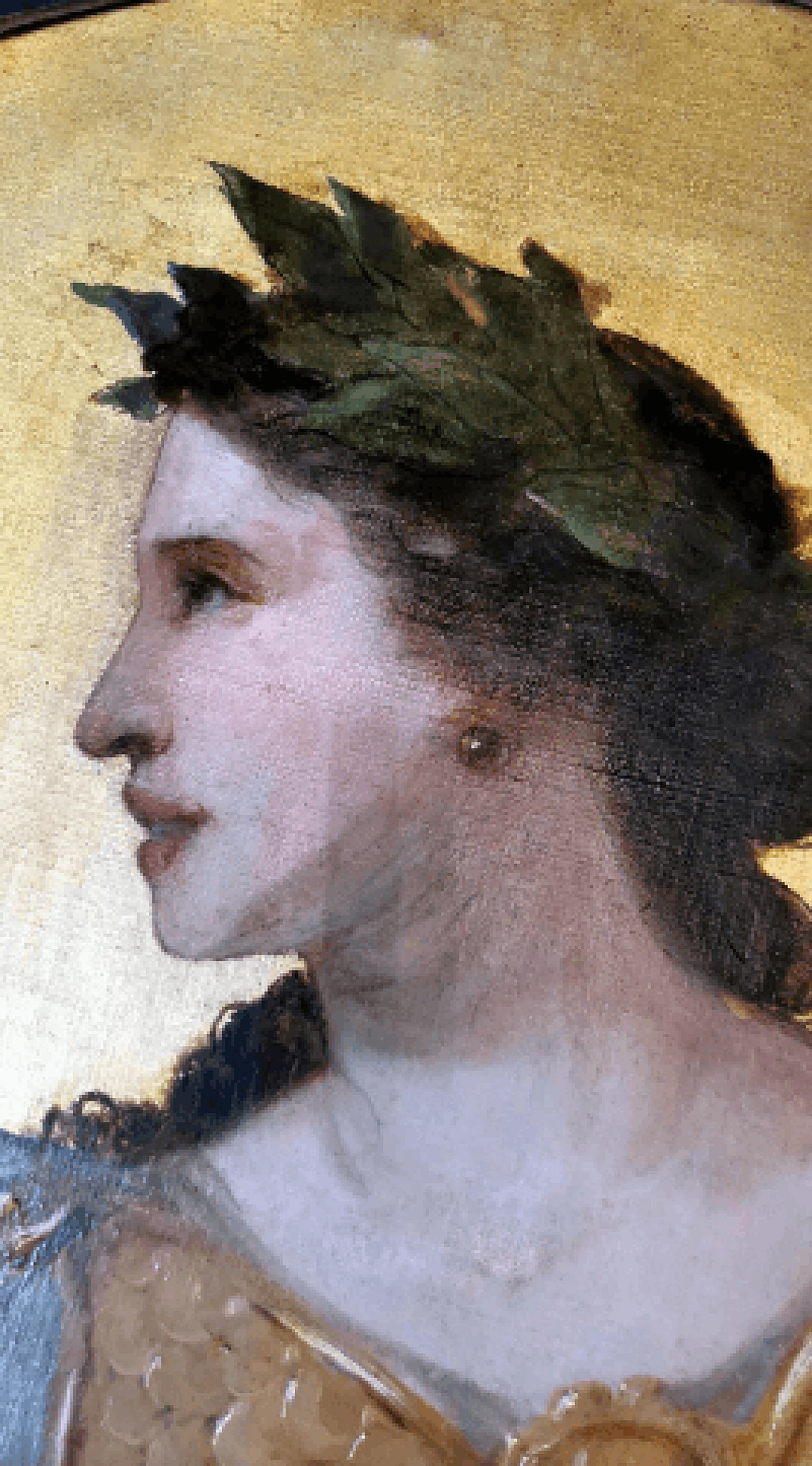
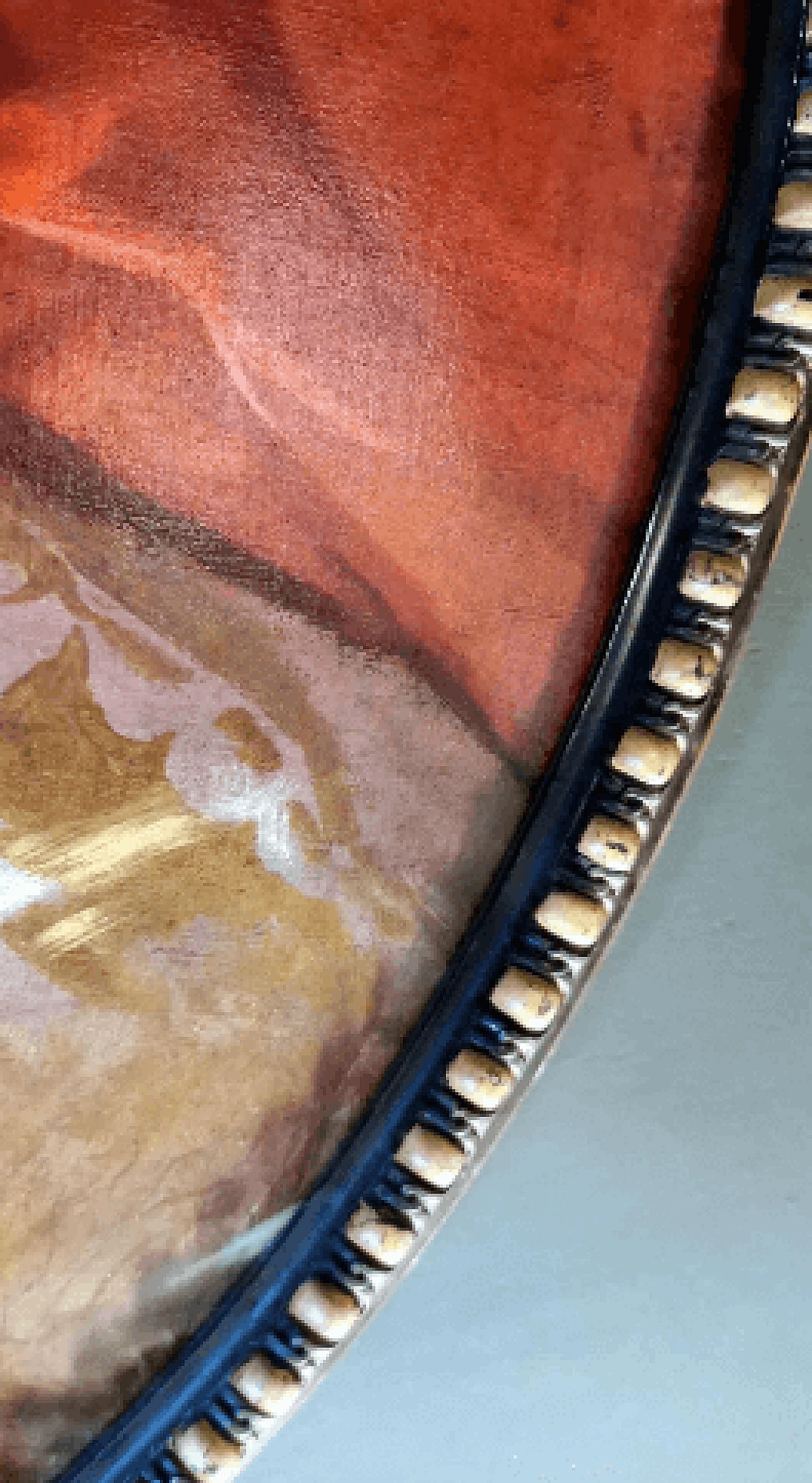
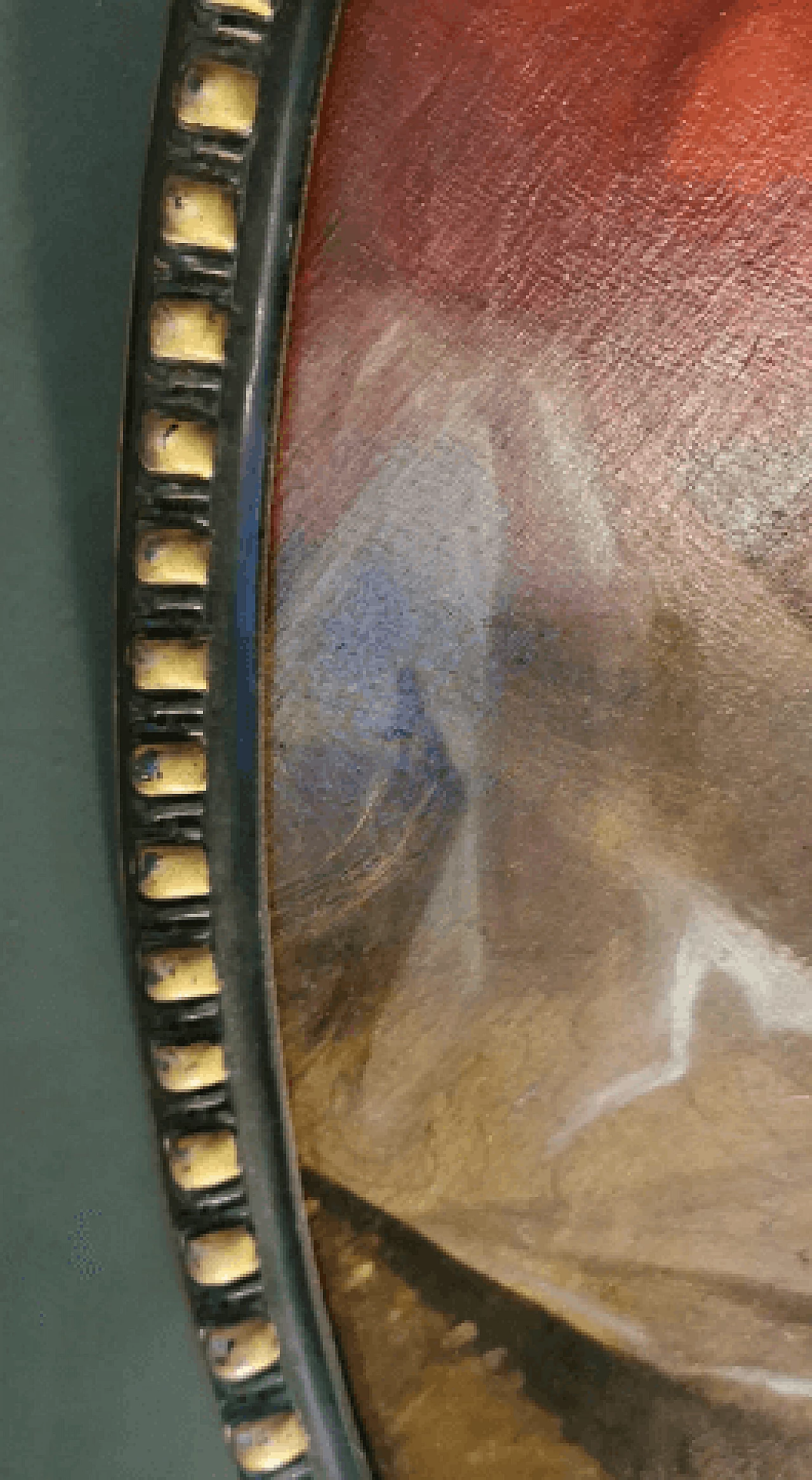
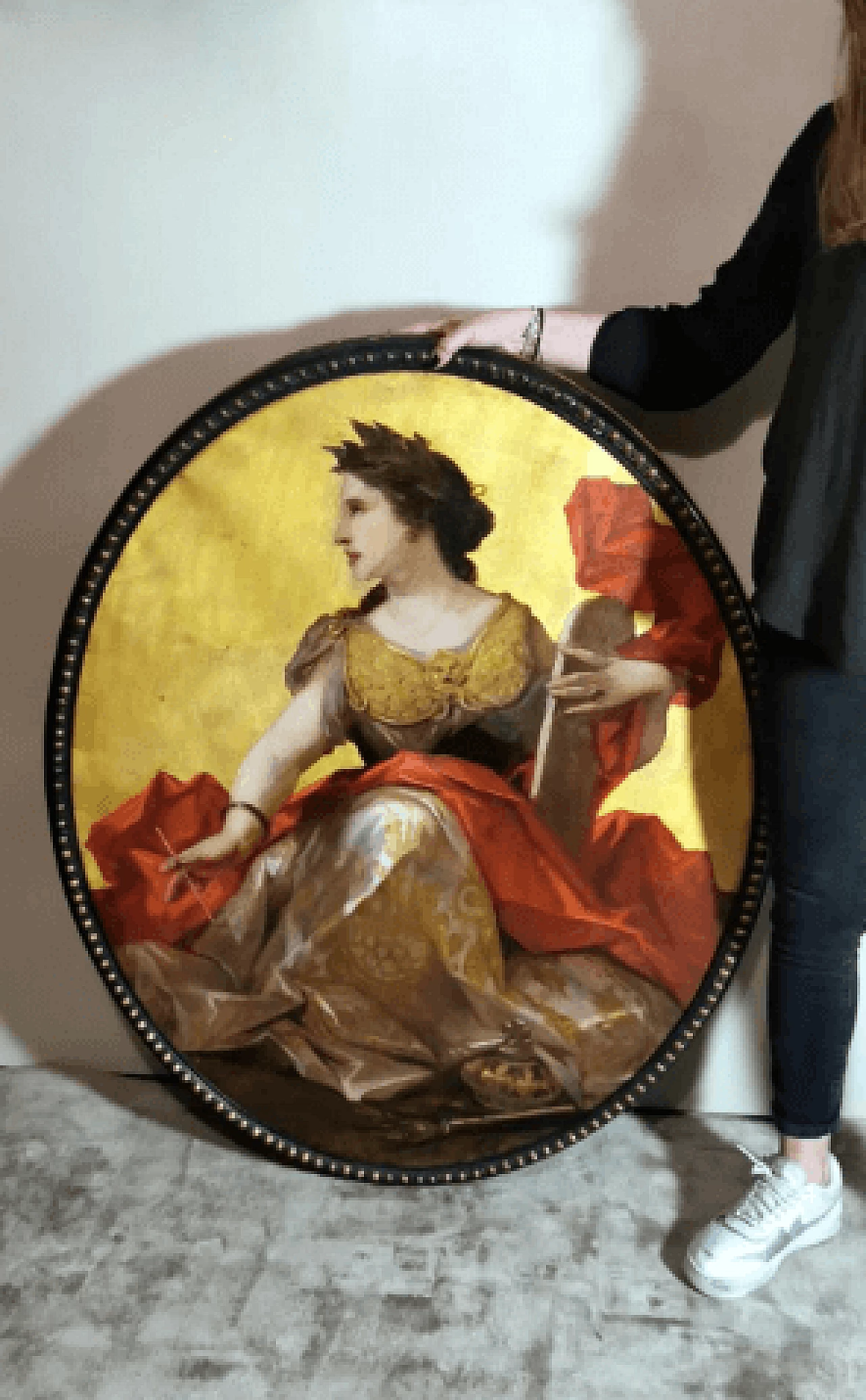
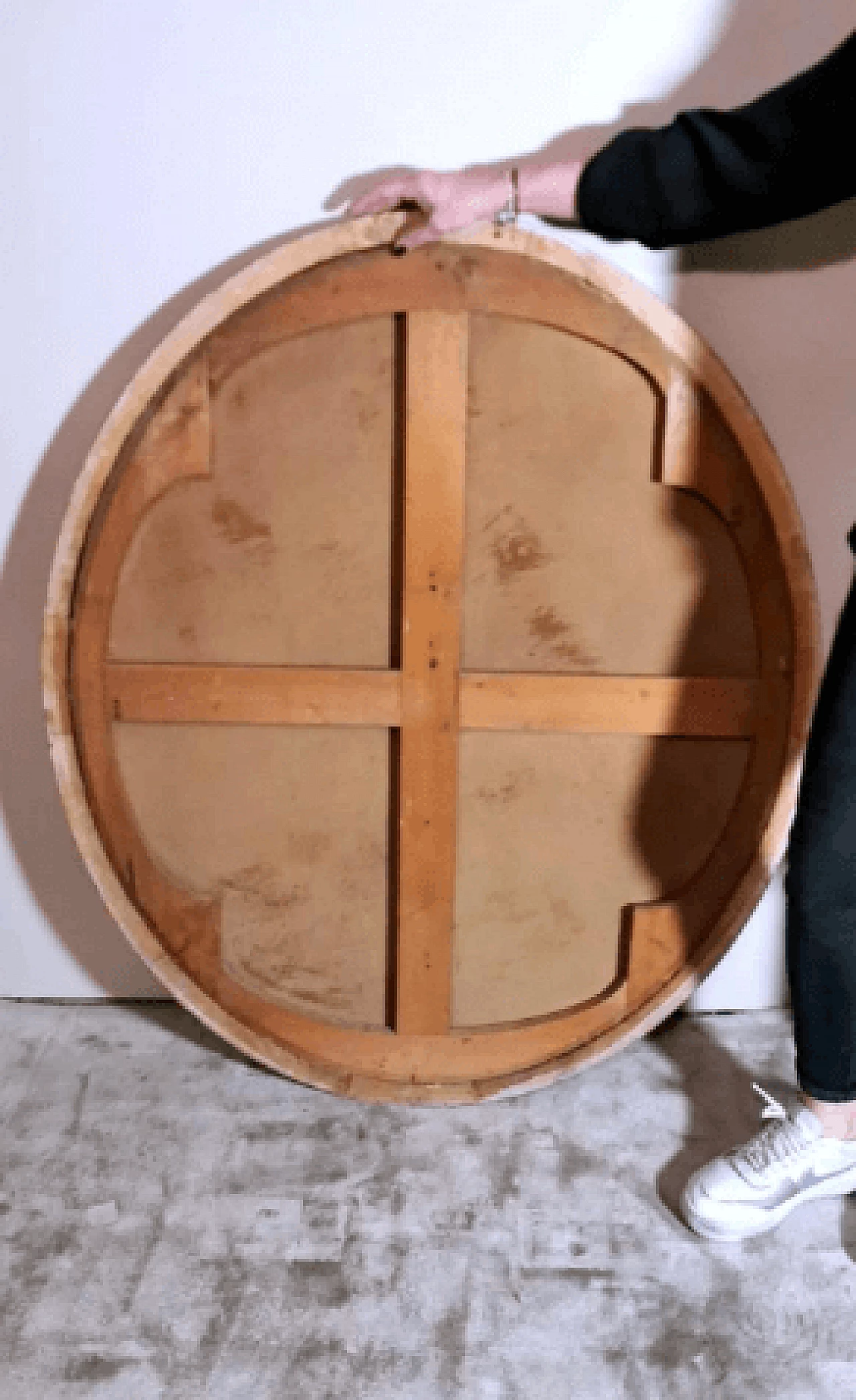
 SILVER Seller in Prato, Italy
SILVER Seller in Prato, Italy






.png)




